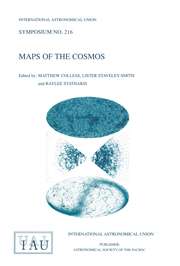No CrossRef data available.
Article contents
Period-Activity Relations in Close Binary Systems
Published online by Cambridge University Press: 04 August 2017
Extract
Since the advent of extensive ultraviolet observations of cool stars, it has been clear that the stellar activity observed is not directly correlated with the star's position on the HR diagram (Basri and Linsky 1979, Stencel et al. 1980). Observations of an important chromospheric diagnostic, the MgII resonance lines, led to the conclusion that stellar chromospheric activity had only a weak dependence on spectral type, and exhibited large variations within a given spectral type. Because of the strong observed correlation of solar activity with magnetic fields, the field is thought to be a natural candidate for the extra parameter which predicts the level of activity. Unfortunately, it is quite difficult to measure magnetic fields directly in most cool stars. Another method with which to examine correlations between magnetic field and stellar activity indirectly is the hypothesis that magnetic fluxes are directly related to a combination of the convective and rotational parameters of a star through its generation in a magnetic dynamo. The α-ω dynamo theory (Parker, 1979) predicts a direct correlation between differential rotational velocities and field generated. Durney and Robinson (1982) predict basically a linear dependence of the emergent flux on the angular velocity of the star. One might therefore expect that in stars with the same fundamental stellar parameters, the amount of activity observed would depend on the rotational velocities. This is difficult to test because most cool stars are slow rotators and only a few rotational velocities are known.
Information
- Type
- II. Rotation — Activity — Cycle — Age Connection: Observations
- Information
- Copyright
- Copyright © Reidel 1983

